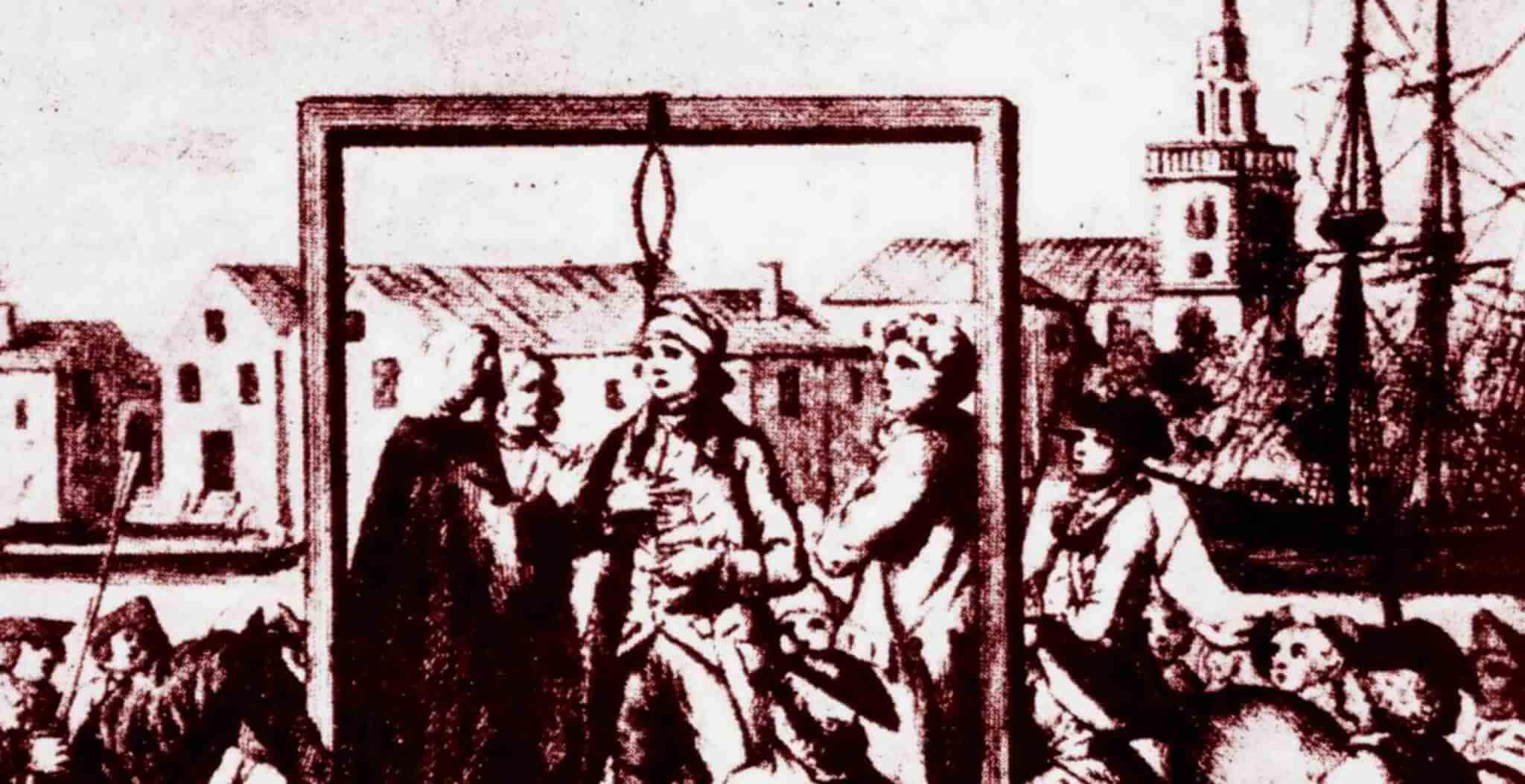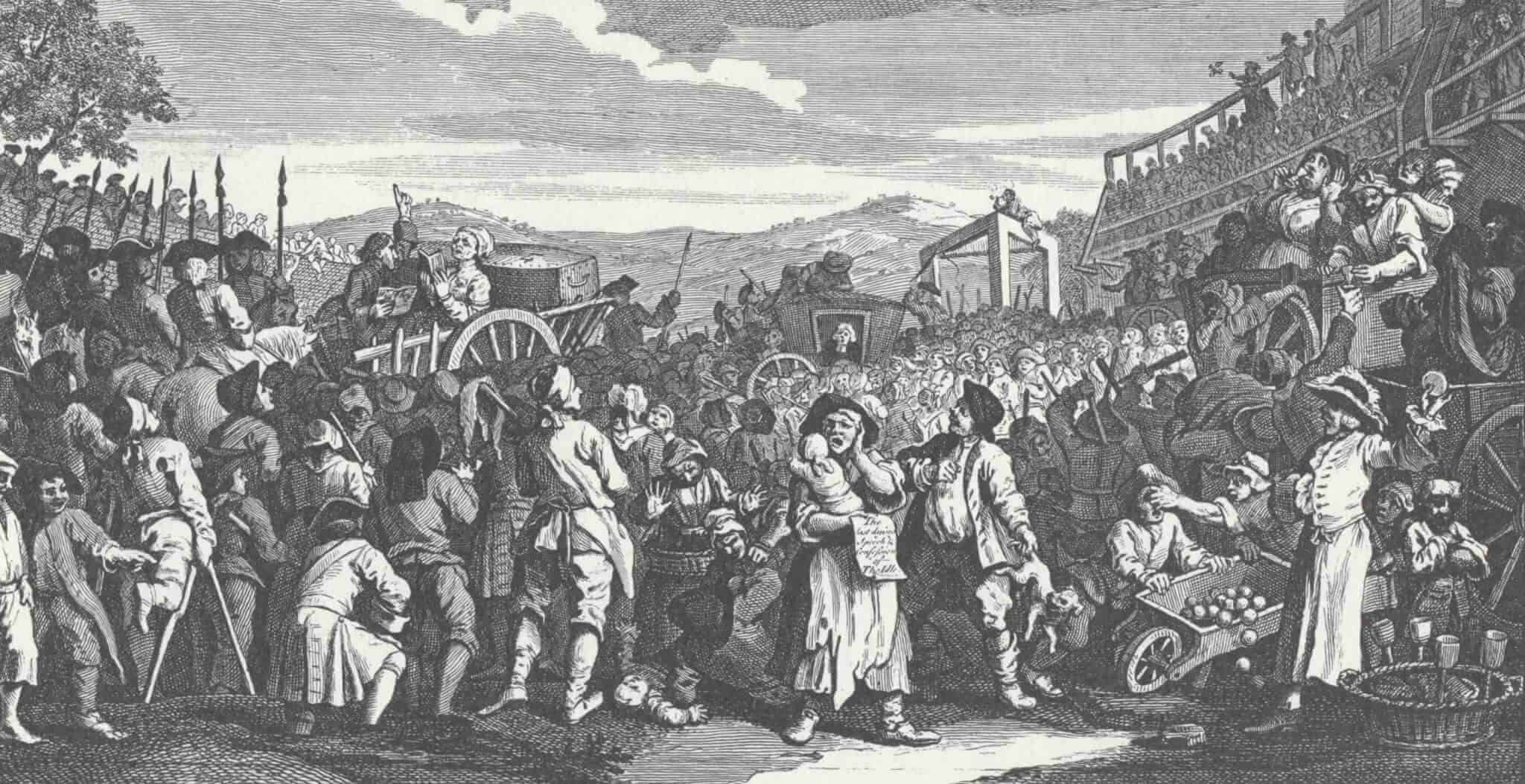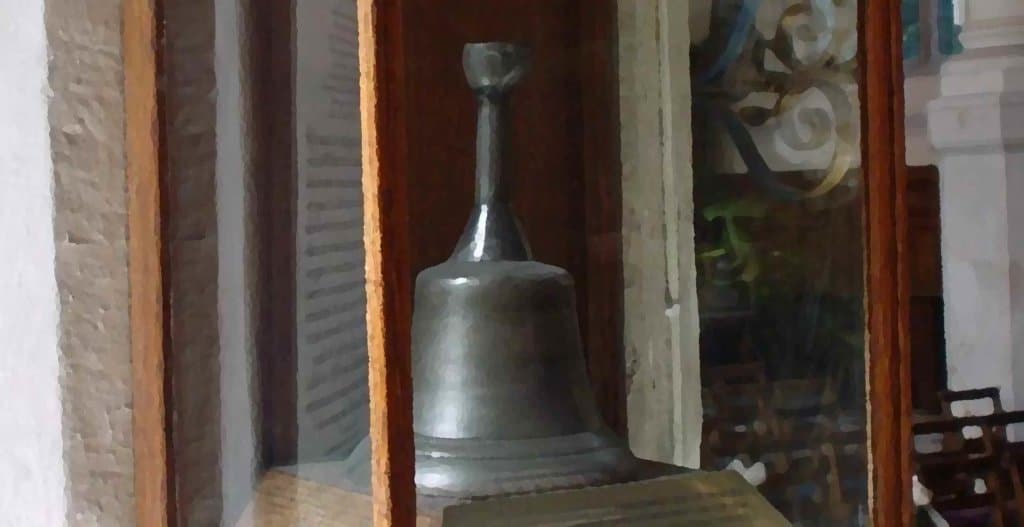At one time the world’s largest port, it is hardly surprising that London has a rather prolific connection with piracy! Unfortunately for the pirates, all those years of fighting, drinking, debauchery, crime and plundering began to ebb away when during the 15th century the Admiralty decided to bring in Execution Dock.
The story goes something like this…
When someone was charged with piracy they would be held in Marshalsea Prison in Southward until their court hearing at the Admiralty courts. Those that were found guilty and sentenced to death would then be paraded from the prison over London Bridge, past the Tower of London and towards Wapping where Execution Dock was located.
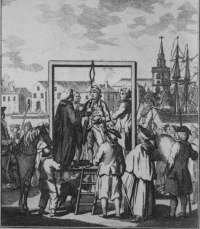 The procession itself was led by the Admiralty Marshal (or one of his deputies) who would be carrying a silver oar, an item representing the authority of the Admiralty. According to reports of the time, the streets were often lined with spectators and the river was packed full of boats, all keen to see the execution take place. As The Gentleman’s Magazine wrote in 1796;
The procession itself was led by the Admiralty Marshal (or one of his deputies) who would be carrying a silver oar, an item representing the authority of the Admiralty. According to reports of the time, the streets were often lined with spectators and the river was packed full of boats, all keen to see the execution take place. As The Gentleman’s Magazine wrote in 1796;
“They were turned off about a quarter before twelve in the midst of an immense crowd of spectators. On the way to the place of execution, they were preceded by the Marshall of the Admiralty in his carriage, the Deputy Marshall, bearing the silver oar, and the two City Marshals on horseback, Sheriff’s officers, etc.”
Perhaps rather fittingly, there was one pub (The Turks Head Inn, now a café) that was permitted to serve the last quart of ale to condemned pirates on their final journey from the prison to the docks. For some of those convicted this may have helped to proverbially “take the edge off” as The Gentleman’s Magazine once again wrote:
“This morning, a little after ten o’clock, Colley, Cole, and Blanche, the three sailors convicted of the murder of Captain Little, were brought out of Newgate, and conveyed in solemn procession to Execution Dock… Colley seemed in a state resembling that of a man stupidly intoxicated, and scarcely awake…”
Here at Historic UK we take a more pragmatic view, and presume this final quart of ale was used to help persuade the prisoners to make a final confession to their accompanying chaplain.
When it was time (and after the ale was finished!), the prisoners were led towards the dock. The execution dock itself was located just offshore and below the low tide line as this was where the jurisdiction of the Admiralty began.
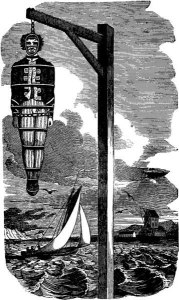 To make the whole ordeal as painful as possible the hanging took place using a shortened rope. This meant that the “drop” was not sufficient enough to break the neck, and instead the pirates died from a long and protracted suffocation. During the suffocation their limbs would spasm and they would be seen to “dance”; this was nicknamed by spectators as the Marshals Dance.
To make the whole ordeal as painful as possible the hanging took place using a shortened rope. This meant that the “drop” was not sufficient enough to break the neck, and instead the pirates died from a long and protracted suffocation. During the suffocation their limbs would spasm and they would be seen to “dance”; this was nicknamed by spectators as the Marshals Dance.
Once dead, the bodies were held in place until three tides had washed over them. The more notorious pirates were then tarred and hung in cages along the Thames estuary to dissuade any other wannabe-trouble makers!
Perhaps the most famous pirate to be tarred and hung in a cage was Captain Kidd (see image on the right), the inspiration for Treasure Island. In 1701 he was convicted of piracy and murder and was taken from Newgate Prison and executed in the same year. Rather gruesomely, on the first hanging attempt the rope broke and he only died on the second attempt. Even more gruesomely, his body was left tarred and gibbeted in an iron cage on the Thames riverbanks for more than twenty years!
The final hangings on Execution Dock were for two men named George Davis and William Watts, both of whom were charged with piracy and met their maker on December 16, 1830.
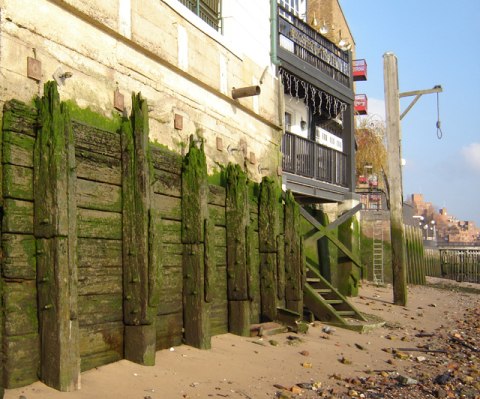
The actual site of Execution Dock is disputed, as the original gallows are long gone (although a replica is still in place by the Prospect of Whitby pub). The current contenders for this rather dubious crown are the Sun Warf building (marked with a large E on the Thames side of the building), The Prospect of Whitby pub, the Captain Kidd pub, and the likeliest location of all – the Town of Ramsgate pub.
A visit to the foreshore is well worth it. Head down Wapping High Street from the Overground station and look out for the Town of Ramsgate. Once at the pub look out for a small passageway that leads to Wapping Old Stairs. Descend the stairs (watching out for high tide, mud, sand and moss!) and you’ll be on the river banks.
